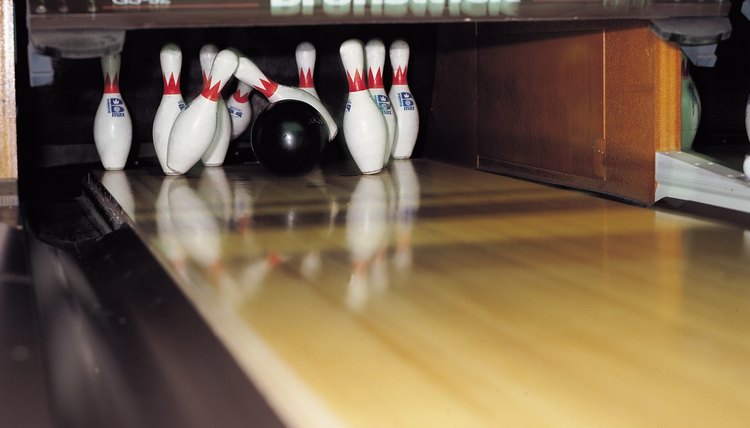Wood Vs. Synthetic Bowling Lanes

The lanes used in bowling alleys may look similar, but that doesn’t mean they’re all the same. The major materials used include wood – either coated with plastic film or urethane – and synthetic. Wood lanes have the softest surface, especially when plastic coated, while synthetic lanes are harder. This difference, along with other discrepancies, can alter the bowling experience depending on the type of lane being used.
History
Before the founding of the American Bowling Congress in 1895, little regularity existed in terms of bowling lane dimensions or materials. Following 1895, most lanes were made of wood, conditioned for durability, which players used in conjunction with lithium bowling balls. These lanes were initially coated with shellac, but due to safety issues, this was replaced with lacquer after the 1930s. A few decades later, urethane began to be used instead for durability purposes, while in the 1990s synthetic lanes became commonplace, offering long-lasting surfaces with less need for maintenance.
Friction and Ball Reactions
How balls travel and hook — the term given to a ball’s swerving to the left or right depending on what hand the bowler plays with – can be influenced by both the smoothness and softness of the lane material. Synthetic lanes are the harder of the two, and so less friction is created. The result is that balls bowled down synthetic lanes often produce a snappy ball reaction, according to the Striking Difference web site. Synthetic lanes are also smoother than their wooden counterparts. This affects the oil used on bowling lanes, causing it to remain longer and, in the case of freshly laid oil, reduce the potential for ball hooking on a synthetic lane. The opposite is true, though, once the oil dries; when this occurs it is the synthetic lanes that create more opportunities to hook.
Wear
Wood surfaces need to be reconditioned. Being softer, they tend to require more general maintenance than synthetic lanes. Synthetic lanes perform variously in terms of wear and tear, because these lanes are produced by different manufacturers. Studies from the United States Bowling Congress indicate that while some synthetic lanes perform best just after installation, others make higher scoring playing surfaces after being worn in for a few years.
Roughness and Consequences
A primary need for bowlers in terms of the lane they’re using is to observe how worn the surface is. Surfaces vary depending on material and maintenance, but in general wood lanes are more likely to be rougher than synthetic lanes. If the lane is significantly worn in visible places, it can affect how the ball rolls and even alter its trajectory.
Writer Bio
Simon Fuller has been a freelance writer since 2008. His work has appeared in "Record Collector," "OPEN" and the online publication, brand-e. Fuller has a Bachelor of Arts in English literature from the University of Reading and a postgraduate diploma from the London School of Journalism.
